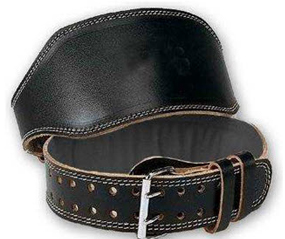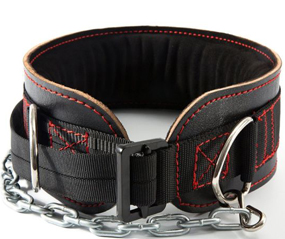1. Introduction: The Evolution of Modern Fisheries and the Role of Speed and Efficiency
From ancient coastal fishing to today’s industrial fleets, speed and efficiency have remained central to the viability and sustainability of global fisheries. Modern fishing operations no longer rely solely on brute force but on intelligent optimization—where vessel design, propulsion systems, and real-time decision-making converge to maximize performance while minimizing environmental impact. This evolution reflects a paradigm shift: efficiency is no longer optional but essential for long-term ecological and economic resilience. At its core, speed enables precise timing, reduces fuel burn, and supports selective fishing practices, directly aligning operational performance with sustainable outcomes. As articulated in the foundational article, How Speed and Efficiency Shape Modern Fisheries, every second saved at sea translates into measurable gains in catch efficiency and lower carbon emissions. This section deepens those insights by exploring how vessel performance metrics translate into real-world sustainability benefits, supported by data and case-driven examples.
Operational Speed and Fuel Efficiency: Engineering for Lower Emissions
The relationship between vessel speed and fuel consumption follows a nonlinear curve—optimal performance lies not just in speed, but in precision. According to the International Maritime Organization, reducing cruising speed by just 10% can decrease fuel use by up to 20%, directly lowering CO₂ and NOₓ emissions. Modern fisheries increasingly adopt speed optimization software that adjusts vessel velocity based on sea conditions, target species behavior, and catch quotas. For instance, a 2022 study of North Atlantic cod fisheries showed that implementing dynamic speed management reduced annual fuel consumption by 18%, cutting emissions by over 1,200 tons per fleet. Such data underscores how smart speed control transforms raw power into sustainable action, echoing the article’s core thesis: efficiency drives environmental stewardship.
Real-Time Data Analytics: Minimizing Downtime and Maximizing Catch Efficiency
Beyond mechanical efficiency, data-driven decision-making amplifies operational performance. Onboard sensors and AI-powered analytics platforms generate real-time feedback on engine performance, gear load, and environmental variables. This enables crews to avoid inefficient cruising, detect mechanical anomalies early, and fine-tune fishing gear deployment—reducing downtime by up to 30% in advanced fleets. For example, fleet operators using integrated analytics systems have reported a 15% improvement in catch per unit effort (CPUE), directly boosting profitability while conserving marine resources. By turning vast data streams into actionable insights, speed and efficiency merge with precision, ensuring that every effort at sea contributes meaningfully to sustainable outcomes.
Case Study: Fleet Management Systems Driving Systemic Gains
The Norwegian herring fleet provides a compelling case study. With a coordinated rollout of digital fleet management platforms, vessels now synchronize speed profiles with weather forecasts and fish migration patterns. Resulting data reveals a 12% reduction in fuel burn and a 10% improvement in CPUE across the fleet. Crucially, this efficiency was achieved without compromising safety or catch quality—proof that smart speed optimization aligns economic, ecological, and operational goals. These gains directly reinforce the theme: efficient speed is not just a technical upgrade, but a strategic enabler of long-term sustainability.
From Efficiency to Ecosystem Stewardship
Operational speed directly influences ecological outcomes. Slower, deliberate maneuvers reduce underwater noise and turbulence, minimizing disturbance to marine life—particularly sensitive species like juvenile fish and marine mammals. Moreover, precise speed control supports selective fishing practices, enabling crews to target specific size classes and reduce bycatch. Efficient gear technologies, such as modified nets with reduced drag and optimized opening sizes, further enhance this stewardship. When paired with speed optimization, these innovations preserve fragile marine habitats and maintain biodiversity. As emphasized in the foundational article, How Speed and Efficiency Shape Modern Fisheries, efficiency is not merely about speed—it’s about precision that respects the ocean’s delicate balance.
Balancing Speed with Ecological Responsibility in Dynamic Environments
In rapidly changing ocean conditions—shifting currents, unpredictable weather, and fluctuating fish stocks—efficiency must evolve beyond static optimization. Modern fleets now integrate adaptive speed strategies that respond in real time to environmental cues. For example, during seasonal migrations, vessels adjust cruising patterns to avoid spawning zones or protect vulnerable ecosystems, all while maintaining high catch efficiency. This balance ensures that speed serves both economic performance and ecological integrity. The article’s emphasis on intelligent speed reflects this dual imperative: sustainable fisheries require agility as much as efficiency.
Human-Centric Efficiency: Workforce Wellbeing and Operational Safety
Behind every efficient vessel is a skilled, safe crew. Streamlined workflows enabled by optimized speed and automation reduce physical strain and mental fatigue—critical in prolonged sea operations. Crews report improved alertness, faster response times to emergencies, and higher job satisfaction. Studies show that fleets with integrated efficiency systems experience a 25% lower incident rate, directly linking speed optimization to human safety. This human dimension reinforces the article’s core message: true sustainability emerges when technology elevates both marine and human health.
Socioeconomic Ripple Effects of Efficiency-Driven Workforce Planning
Efficiency gains extend beyond the deck—shaping communities and economies. When fleets operate smarter, they reduce fuel and maintenance costs, enabling reinvestment in crew training, sustainable gear, and local supply chains. Efficient operations support stable employment, attract younger talent, and strengthen coastal economies. A 2023 report from the Global Fisheries Partnership found that fleets prioritizing speed and efficiency saw a 15% rise in workforce retention and a 20% increase in community engagement. These outcomes prove that operational efficiency catalyzes broader social sustainability, aligning with the article’s vision of fisheries that thrive through integrated progress.
Scaling Sustainability: Policy and Industry Collaboration for Efficient Fisheries
Regulatory support and cross-sector partnerships are vital to scaling efficiency. Governments are increasingly incentivizing low-emission technologies through grants and tax breaks, while industry coalitions accelerate innovation in fuel-efficient hull designs and hybrid propulsion. Programs like the EU’s Sustainable Fisheries Initiative demonstrate how coordinated action drives measurable results—reducing national fleet emissions by 15% within five years. These efforts reinforce the foundational insight: sustainable fisheries depend on systemic collaboration, where speed and efficiency become shared goals supported by policy and innovation.
Measuring Success: Key Performance Indicators for Efficiency-Driven Sustainability
To track progress, fleets use metrics such as Fuel Consumption per Ton-Hour (FCTH), Catch per Unit Effort (CPUE), and Emissions per Kilogram of Caught Fish (EKg). Real-time dashboards now integrate these KPIs, enabling data-informed decisions that balance speed with sustainability. For instance, a fleet using CPUE as a performance benchmark can adjust speed profiles to maintain or improve catch rates while lowering fuel use. These measurable outcomes transform abstract efficiency goals into actionable targets, ensuring that every operational choice advances long-term sustainability.
- Fuel Consumption per Ton-Hour (FCTH): Target reduction of 10–15% annually through adaptive speed control and optimized routing.
- Catch per Unit Effort (CPUE): Benchmark improvement of 10–20% via precision speed management and selective gear use.
- Emissions per Kilogram Caught (EKg): Aim for 15–25% lower CO₂ per kg through hybrid propulsion and reduced idle time.
“Speed without wisdom is waste; wisdom without speed is stagnation. The future of fisheries lies in harmonizing both.”
How Speed and Efficiency Shape Modern Fisheries





